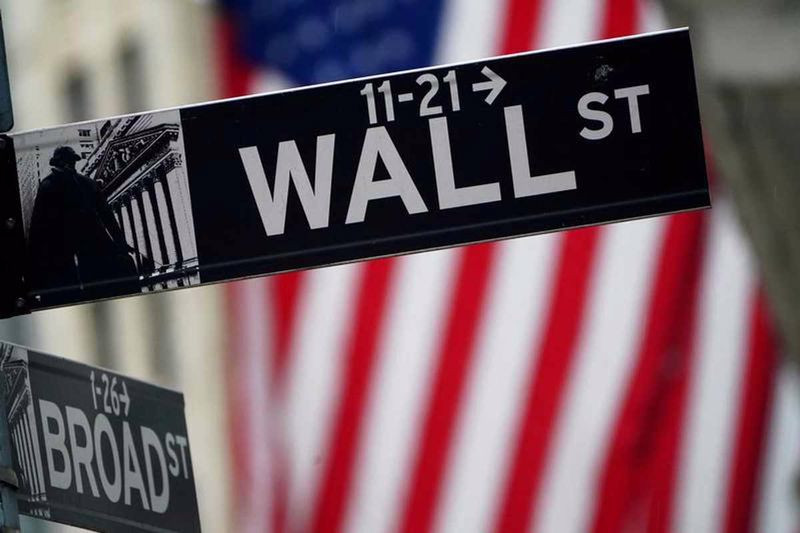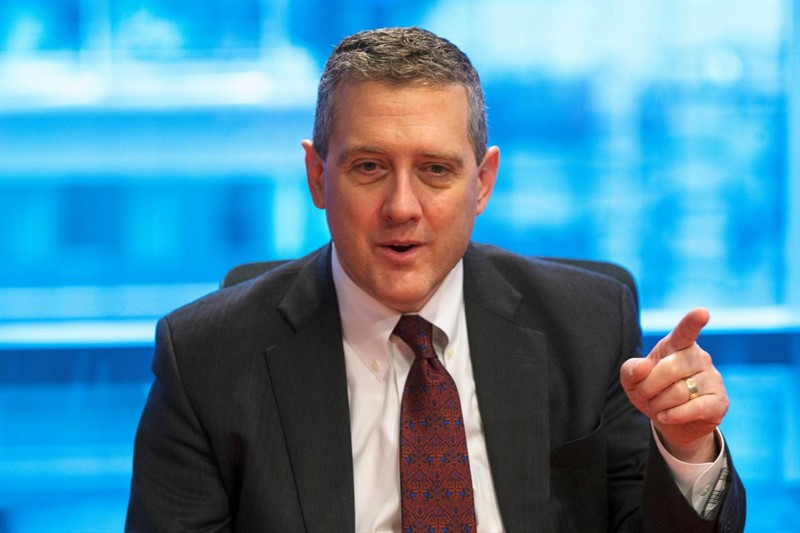The EUR/USD pair has been trading in a relatively narrow range for the second week.On the one hand, the prospects of an increase in the cost of borrowing in the eurozone provide some support for the single currency.
On the other hand, market participants understand that it is not worth waiting for an aggressive rate hike in the eurozone, given the economic difficulties and the difficult situation in the energy sector of the bloc.
In addition, the European Central Bank's excessive hawkish attitude will increase the risks of fragmentation in the regional government bond market.
The fact that the ECB is on the verge of such an important change in its policy as an exit from negative rates after eight years keeps the single currency above the $1.05 level.
At the same time, it is obvious that it will be difficult for the euro to move much higher than $1.06 without a significant weakening of the US dollar.
The greenback retreated by about 1.5% from a two-decade high reached in the middle of this month near 105.78.
However, investors are in no hurry to sell the protective US currency due to lingering fears about a slowdown in the global economy and further aggravation of the geopolitical situation in the world.
"The dollar is likely to fall only when the global economy enters a more sustainable growth path. The market is looking to the future, but all we see today is danger," Societe Generale strategists said.
They recommend holding long positions on USD until some uncertainty decreases.
It is noteworthy that the current retreat of the greenback is more measured than in the second half of May.
The loss of upward momentum by the US currency is primarily a consequence of the fact that other central banks are entering a pace of policy tightening comparable to the Federal Reserve.
In addition, there have been suggestions that a slowdown in the growth of the US economy and falling commodity prices may prompt the Fed to raise interest rates less sharply.
Money markets expect an increase in the cost of borrowing in the US to 3.25-3.5% by the end of this year from the current level of 1.5-1.75%, whereas a week earlier it was predicted to increase to 3.5-3.75%.
Federal funds rate futures estimate with a high probability that the Fed will be forced to start lowering the interest rate again no later than next summer.
It is expected that if the economic downturn becomes more obvious, and there are signs of stabilization of price pressure, the Fed will change course. At this point, the dollar may move to a medium-term decline.
"We believe that, ultimately, a slowdown in the growth of the US economy and a change in the dynamics of inflation will convince the Fed to move off the course that its most hawkish members are currently advocating, thereby paving the way for a weaker dollar in 2023. But this will not become obvious in the next few months, so in the near future we are inclined to believe that the US currency will maintain or even strengthen its position," CIBC analysts noted.
"The ECB's June report highlighted the need to abandon pandemic-era policies. But the central bank's gradual approach to changing policy suggests that the bulls will have to wait for the EUR/USD exchange rate to rise until 2023," they added.
On Monday, the greenback sank to a more than one-week low around 103.40, after which it managed to reduce losses and ended yesterday's trading near 103.70.
The day before, the US Department of Commerce reported that the volume of orders for durable goods in the US increased by 0.7% in May, while analysts expected an increase of only 0.1%.
These data not only supported the dollar and limited the growth of the EUR/USD pair, but also put pressure on the quotes of US stocks.
The S&P 500 index fell 0.3% to 3,900.11 points.
Any good macroeconomic indicators are now interpreted as bad news for the market, Lombard Odier strategists say.
"If we continue to see strong growth and strong inflation, then the Fed will continue to raise rates, and we will find ourselves in recession," they said.
In the short term, stocks may be supported by investors rebalancing their portfolios ahead of Thursday, when the second quarter ends, analysts say.
However, they warn that a more active rate hike in the United States and a reduction in the Fed's balance sheet in the medium term will lead to a deterioration in the performance of companies and the situation in the economy, which will result in the release of US stock indices to new multi-year lows.
Citigroup analysts lowered the forecast for the S&P 500 at the end of this year by 500 points, to 4,200 points, due to stubbornly high inflation and the aggressive policy of the Fed.
"The Fed's hawkish attitude and the impact of rising real rates on the valuation of stocks have become the defining signs of the fall of the US stock market in the first half of the year," they said.
According to the bank's estimates, the probability of a global recession is currently about 50%, and it may begin in mid-2023.
The S&P 500 index is now on track for two consecutive quarterly declines for the first time since 2015.
"Under the scenario of a "soft landing" of the economy, in which profit growth expectations in 2023 will be close to zero year-on-year, we expect the S&P 500 index to end the year near current levels at around 3,900," UBS analysts said.
"If the deterioration in economic data leads to a downward revision of earnings forecasts to about -15%, which corresponds to the average decline during recessions, we expect the S&P 500 to trade around 3,300," they added.
Key Wall Street indexes ended Monday's trading in the red after a strong growth last week.
They were inspired by the words of Fed Chairman Jerome Powell that the national economy is stable enough to resist the central bank's attempts to curb inflation, which has reached a forty-year high, without slipping into recession.
James Bullard, the head of the St. Louis Federal Reserve, supported his boss. Last week, he called fears of a recession in the US exaggerated.
"An increase in interest rates will lead to a slowdown in the economy, but as a result of this slowdown, growth rates will correspond to the trend rather than fall below it. I don't think it's going to be a very big slowdown. It seems to me that it will be more about a moderate slowdown in the economy," said Bullard.
Skeptics argue that the Fed is now only trying to catch up with market expectations, not actually managing the processes, but following them.
They believe that the US central bank should have taken measures much earlier to contain inflation when it was just beginning to accelerate more than a year ago.
It is enough to look at the basic inflation indicators, and you can see the price pressure due to excessive demand, which could be repaid in a timely manner by raising interest rates.
Why didn't the Fed do anything?
The fact is that by 2020, most of the leaders of the world's central banks have come to believe that the risk of inflation in the modern world approaches zero. And in response to the challenges of the COVID-19 pandemic, they have come up with nothing better than to start distributing money to everyone.
Prominent central bankers hoped that the post-pandemic recovery of the global economy would allow for a smooth curtailment of monetary incentives. However, the central banks have confused all the cards with geopolitical factors that have acquired global proportions.
Over the weekend, the IMF lowered its estimate of US economic growth for the current year from 3.7% to 2.9%. The authoritative organization called on the Fed to promptly curtail monetary incentives, and also pointed to the intensity of domestic demand in the United States, which is fueling inflation around the world.
However, the surge in prices is not least caused by the increase in costs for manufacturers due to the rise in fuel prices, the scrapping of supplies and logistics chains. And it may be difficult to curb inflation using monetary policy methods alone. In particular, raising rates may have a limited impact on inflation, but it can greatly slow down economic growth, as well as negatively affect lending, investment and company profits.
The tightening of monetary policy in the United States will continue, and the slowdown in the growth of the national economy is likely to affect the rest of the world, HSBC analysts believe, who are waiting for further dollar growth.
"As policy tightening in the US slowly unfolds, it may pose an additional downward risk to the dynamics of global economic growth. In our opinion, the higher the downside risks for global growth, the stronger the upside risks for the dollar as a whole. The opposite should also be true," the bank's analysts noted.
"Thus, two forces, united, contribute to the strengthening of the USD, namely, the hawkish position of the Fed and the slowdown in global economic growth. These factors have supported and will continue to support our optimistic view of the dollar in the coming months," they added.
The greenback continues to enjoy good support due to the divergence of the Fed's policy towards most of its G10 counterparts, especially the ECB.
Apparently, the ECB took the inflationary monster too lightly by not raising its interest rates.
This is the reason that the inflation rate in the eurozone has risen above 8%.
There is reason to believe that inflation in the eurozone may accelerate in the near future, and the indicator will be higher than in the United States, amid a strong increase in fuel prices, primarily natural gas.
The EU imports a lot of raw materials because its own resources are limited.
Rising inflation in the region is likely to force investors to get rid of the single currency, as the ECB still keeps its discount rate at zero.
"The ECB is in a difficult position because it is expected to see a more significant slowdown in economic growth than many of its peers. The central bank can hardly do much in terms of tightening policy, given the ongoing conflict in Ukraine and the risk of fragmentation in the eurozone," TD Securities strategists said.
Commerzbank believes that the risks for EUR/USD remain downward.
"It is becoming increasingly difficult for the euro to strengthen against the US dollar, as concerns about a possible weakening of the global economy put pressure on market sentiment. The risk of an energy crisis due to the situation in Ukraine remains, so it is doubtful that investors will be ready to bet on further strengthening of the euro," the bank's analysts said.On Tuesday, the greenback leaves behind two daily consecutive pullbacks. Dollar bulls managed to organize a fairly confident rebound and returned quotes to the area above the 104.00 mark.
A breakthrough above 104.95 (the weekly high of June 22) will open the way to 105.78 (the 2022 high of June 15), and then to 107.30 (the monthly high of December 2002).
On the other hand, the initial support is at 103.80, followed by 103.40 (weekly low of June 16), 102.91 (55-day moving average) and 101.30 (monthly low of May 30).
The dollar strengthened on Tuesday amid negative dynamics of key Wall Street indices. In particular, the S&P 500 is losing about 2%.
It looks like the US stock market was just clearing last week's oversold, and a bearish reversal is out of the question, at least until US inflation starts to slow and the Fed becomes less aggressive.
New York Fed President John Williams said that interest rates should definitely be between 3% and 3.5% by the end of this year, but he does not expect a recession in the US.
After these comments, the dollar held its position against its main competitors, including the euro.
The EUR/USD pair reached local highs around 1.0600 at the beginning of the European session. However, then it turned downward and lost almost all the points gained during the recent two-day growth.
The EUR was tripped up by statistical data for Germany, which reflected that the consumer confidence index in the national economy as of July fell to a record low in the entire history of observations, amounting to -27.4 points.
Meanwhile, ECB President Christine Lagarde confirmed the central bank's readiness to raise the key interest rate by 25 basis points at the next monetary policy meeting in July, with the prospect of its further increase in September. However, she did not specify the exact amount of the increase in the cost of borrowing, saying only that a larger rate increase would be appropriate if the inflation forecast remains the same or worsens.
Lagarde also did not provide any additional details about the new instrument that the ECB is developing to prevent the so-called "fragmentation".
She only warned that inflation in the eurozone is undesirably high and downplayed the risks of recession, noting that policymakers still expect positive growth rates.
As a result, the euro was among the outsiders of the foreign exchange market at the beginning of the US session. Then it slightly reduced losses, rising above the $1.0530 level, the next resistance is located at $1.0580.
However, the EUR/USD pair needs to settle above the 1.0600 mark, reinforced by the 55-day moving average, in order to continue growing.
If this mark is overcome, then the next important obstacle will be the level of 1.0660. It is expected that when closing above this level, the pressure on the pair will weaken, and the next targets of the bulls will be the June peak at 1.0770 and the May peak at 1.0785.
In the long term, the pair will remain negative as long as it trades below 1.1125.















